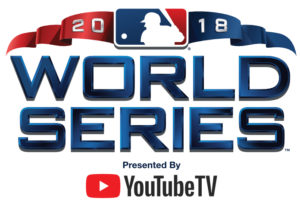With LA’s victory on Saturday night we now know it’s the Dodgers that will face the Red Sox in the 2018 World Series, which starts Tuesday at Fenway Park.
 No matter which team won the National League Championship Series, Boston hadn’t had much regular or postseason experience with either the Dodgers or the Brewers. And while Boston no doubt had plenty of confidence against either, there’s reason to believe Milwaukee might have proven the easier path to a ninth championship.
No matter which team won the National League Championship Series, Boston hadn’t had much regular or postseason experience with either the Dodgers or the Brewers. And while Boston no doubt had plenty of confidence against either, there’s reason to believe Milwaukee might have proven the easier path to a ninth championship.
The Brew Crew
The Brewers of the American League started life as the Seattle Pilots in 1969 before moving the Milwaukee a year later. They switched to the National League in 1998. The Red Sox were 211-183 (.536) against the Brewers while they were in the AL, 8-7 against them in Interleague play since the club’s switch to the NL.
The Sox and the Brewers had never met in the postseason.
The Blue Crew
The Dodgers have always been a National League club with a history that dates back to 1884, when they were the Brooklyn Atlantics. The club went through five more names (the Grays, the Grooms, the Bridegrooms, the Robins and—oddest of all—the Superbas) before settling on “Dodgers” in 1911. They moved to Los Angeles in 1958.
Despite their long history, the Dodgers have matched up just fifteen times in the regular season with the Red Sox, most recently in a three-game set in 2016 in Los Angeles. LA won that series 2-games-to-1. The Sox won by the same margin when the teams met up the before that in 2013, also in California. In 2010 Boston swept a three-game set at Fenway. In all, the Red Sox at 8-7 in regular season match-ups.
Red Sox, Dodgers and the 1916 World Series
The Red Sox and the Robins met once in the postseason for the 1916 World Series. Naturally, it’s a good story and all the more so because it features The Babe.
21-year-old Babe Ruth, playing for Boston in just the third of what would be a 22-year career, was 0-for-5 at the plate in that Fall Classic but Ruth made his presence known, as he had all year, from the mound.
The Babe had already gone 23-12 in that regular season with baseball’s best ERA (1.75) in 44 games (40 starts). His 323.2 IP in 1916 are, to this day, the 10th-most innings worked in a single Sox season. When Ruth took the baseball for Game 2 of the World Series for that day game in Boston he couldn’t have known he would make history, as he would do again and again through the long career ahead of him.
For the Red sox, things didn’t get off to a great start. With two outs in the top of the first Ruth, with the help of some bobbling in the outfield, allowed an inside-the-park-home run by Robins center fielder Hi Myers. Despite that, Ruth settled in and even drove in the tying run in the bottom of the third with a one-out groundout that allowed Everett Scott to score after a leadoff triple.
From there, it was zeros for both teams. Ruth, toe-to-toe with Robins starter Sherry Smith, allowed no runs over 10 more innings.
Finally, in the bottom of the 14th, after a lead off walk to Dick Hoblitzell (who was then bunted over to second), Boston’s Del Gainer came through with a pinch-hit single that brought pinch-runner Mike McNally in to score the walk-off run.
Ruth worked all 14.0 inning of that game, a major league record for a starting pitcher in a postseason game to this day. He allowed six hits but just one run. He walked three and struck out four.
The 14-inning game remains the longest in World Series history, tied with 14-innings between the Royals and Mets in Game 1 in 2015 and also between the White Sox and Astros in Game 3 of the 2005 championship.
Quiet The Band
Between innings the Royal Rooters—not the Dropkick Murphys—serenaded the Sox so frequently with the original version of “Tessie” that Brooklyn manager Wilbert Robinson (shown here) complained to the home plate umpire about what the New York Times called “its monotonous chorus.” Umpire Bill Dineen called an end to the band’s performance, which was “followed with a chorus of hand clapping,” the Times reported.
As it was the year before, the 1916 World Series was played up the street from Fenway Park at Braves Field, which could accommodate the larger crowds. There’s no word on how many of the 47,373 spectators stayed for the whole game, but they may well have; the whole thing was over in just two hours and thirty-two minutes.
The Red Sox went on win the 1916 World Series 4-games-to-1.
Leave a Reply